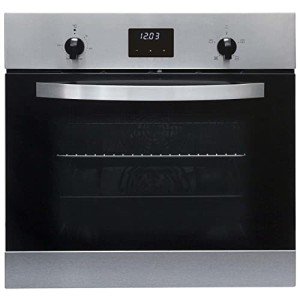10 Healthy Habits For Ovens And Hobs
Understanding Ovens and Hobs: A Comprehensive Guide
Cooking has come a long way considering that the days of open flames and primary cooking methods. Today, ovens and hobs are at the heart of contemporary cooking areas, providing flexibility, efficiency, and a range of cooking alternatives. Whether you are a novice cook or an experienced chef, understanding the differences, features, and functions of these home appliances is important for optimizing culinary capacity. This post breaks down the various types of ovens and hobs available on the marketplace, their performances, and how to pick the ideal home appliances for your kitchen.
What is an Oven?
An oven is an enclosed area created for heating and cooking food, providing numerous techniques such as baking, roasting, and broiling. Ovens come in numerous types, each serving special cooking choices and requirements.
Types of Ovens
Conventional Ovens:
- Use gas or electricity for heating.
- Typically consist of a heating component at the top and bottom.
- Perfect for basic baking tasks.
Convection Ovens:
- Use a fan to distribute hot air, promoting even cooking.
- Ideal for baking, roasting, and reheating.
- Minimizes cooking time and enhances flavor.
Steam Ovens:
- Utilize steam to prepare food while retaining moisture and nutrients.
- Excellent for health-conscious cooking, such as veggies and fish.
Microwave Ovens:
- Use electro-magnetic radiation to heat food rapidly.
- Best for reheating leftovers or cooking simple meals.
Wall Ovens:
- Built into the wall, conserving area in the kitchen.
- Offered in different configurations, including single or double ovens.
Key Features of Ovens
- Temperature level Control: Precision heating for different baking and cooking processes.
- Self-Cleaning Options: Some designs have self-cleaning modes that use heats to burn off food residue.
- Smart Features: Wi-Fi connectivity enables remote pre-heating, monitoring, and recipe management via smart devices.
What is a Hob?
A hob is a cooking surface, frequently referred to as a range or cooktop, where pots and pans is positioned for heating. Hobs are available in various materials, sizes, and heating approaches, catering to varied cooking requirements.
Kinds of Hobs
Gas Hobs:
- Utilize gas burners for direct flame cooking.
- Deal accurate temperature level control and are favored by numerous professional chefs.
Electric Hobs:
- Use electric coils or smooth tops.
- Some designs are geared up with induction innovation, supplying rapid heating through electro-magnetic energy.
Induction Hobs:
- Cookware should be made from magnetic materials.
- Extremely energy-efficient, providing fast heat and minimizing burn dangers.
Ceramic Hobs:
- Feature a glass-ceramic surface area with heating elements below.
- Easy to clean but can be less energy-efficient than induction hobs.
Key Features of Hobs
- Burner Configuration: Varies from 2 to six burners, depending on design and size.
- Power Levels: Multiple settings permit higher precision in cooking.
- Security Features: Options like flame failure devices and child lock settings ensure security during cooking.
Selecting the Right Oven and Hob
Selecting the right oven and hob for your kitchen involves careful consideration of various aspects. Below is a list of questions to guide your choice procedure:
- What is your main cooking design?
- How much kitchen space do you have?
- What is your spending plan?
- Do you choose gas or electric devices?
- Are extra functions like clever connectivity essential to you?
Table Summary of Key Differences Between Ovens and Hobs
Function
Oven
Hob
Functions
Baking, roasting, broiling
Boiling, frying, sautéing
Cooking Method
Enclosed heat
Direct cooking surface
Temperature Control
Adjustable settings
Range settings
Types
Electric, gas, convection, microwave
Gas, electric, induction, ceramic
Cooking Capacity
Larger (can prepare several dishes)
Smaller (concentrate on instant cooking)
Cleaning
Self-cleaning options available
Normally manual cleansing needed
Maintenance Tips for Ovens and Hobs
Correct care and upkeep of your cooking home appliances extend their life expectancy and effectiveness. Here are vital maintenance tips:
Regular Cleaning:
- Clean the oven interior after each usage to prevent residue accumulation.
- Clean down hob surface areas after cooking to avoid discolorations.
Check Seals:
- Ensure the oven door seals are undamaged to maintain energy efficiency.
- Replace worn-out gaskets and seals as needed.
Examine Burners and Elements:
- For gas hobs, look for clogs in burners.
- For electric hobs, check coils and surface areas for signs of wear.
Frequently asked questions
Can I use any pots and pans on induction hobs?
- No, induction hobs only work with magnetic cookware, such as cast iron or stainless-steel.
What is the most energy-efficient cooking home appliance?
- Induction hobs are typically the most energy-efficient option, utilizing less energy than traditional gas or electric designs.
How often should I clean my oven?
- It's a good idea to clean your oven every few months, or more frequently if you use it frequently.
Can I install an oven and hob individually?
- Yes, both appliances can be set up individually based upon kitchen design and space.
What should I think about when setting up a gas hob?
- Guarantee correct ventilation and follow local safety codes. It is recommended to have an expert set up gas home appliances.
Comprehending the functions, types, and maintenance of ovens and hobs can substantially enhance your cooking experiences. Choosing just click the next post customized to your cooking style, kitchen area, and security requirements can make all the difference in achieving culinary success. By being informed about your alternatives, you can delight in a more effective and satisfying cooking journey, bringing delicious meals to your table with ease.
